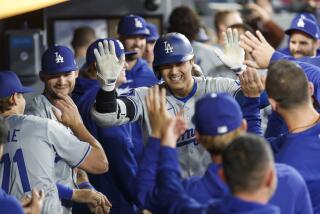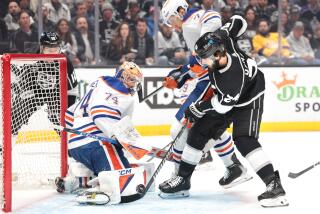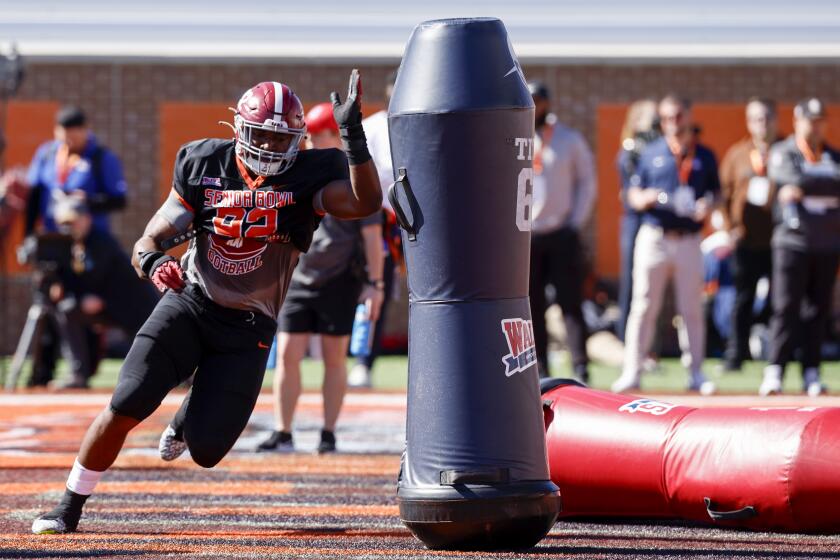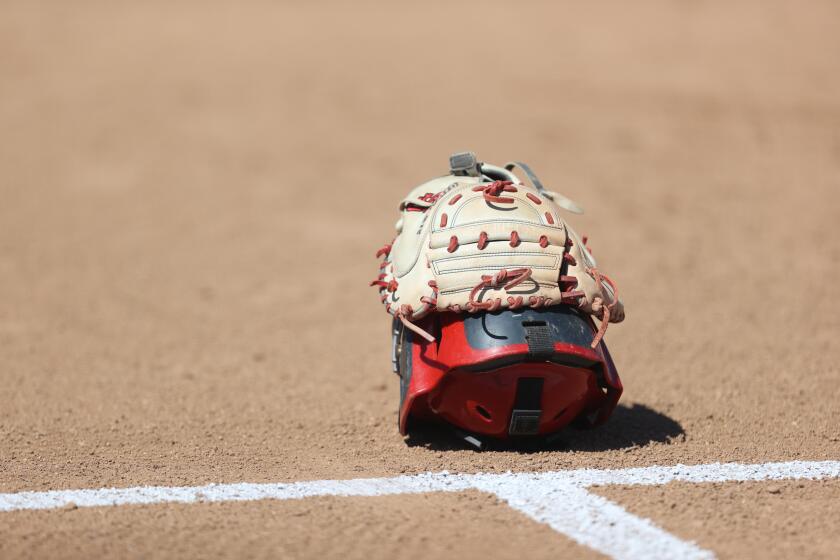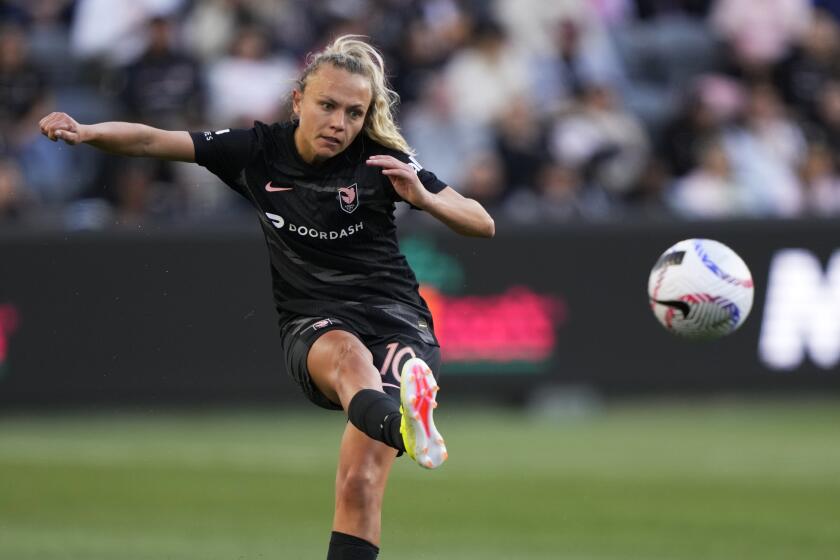Pasarell’s Desert Vision Is Finally in Focus
The Dreamer in the Desert is breathing easier these days.
Charlie Pasarell’s occasional sleepless nights the last few years over the future of his tennis event in Indian Wells, either the fifth or sixth most important in the sport depending on your East or West Coast bias, are over for now. The Pacific Life Open is not only alive, but doing quite nicely.
Not that this event was ever on life-support. It is too crucial a tour stop for tennis to let it go bust. Along with its twin brother in Miami, which starts Wednesday, it has become the ideally placed oasis for players and fans alike in a season now packed with Grand Slam events, Davis Cups, Fed Cups and, this year, an Olympics.
The 2004 tournament will be remembered here as a turning point on several fronts.
* This year’s 12 days of tennis, played in heat capable of melting Donald Trump’s heart, sold 267,834 tickets, an increase of 54,042 over its previous best two years ago.
* The tournament went to a draw of 96 players in the men’s singles -- to match the women’s -- and the result was an opening weekend of compelling men’s matches.
That was not lost on the public, which grabbed up every hotel room in the area for the first weekend and most of the other days right through Saturday night. Tournament organizers locked up 8,000 rooms and used every one of them.
* Sunday’s finals featured the No. 1 player in men’s and women’s tennis.
* This year’s event had one of those signature moments that tend to bring fans back. Andre Agassi beat young star Guillermo Coria in an electric-atmosphere, warm-night session.
* Television coverage has been all over the map here. Some years, organizers paid just to get it on the air and last year they caved to the TV gods at ABC and put the women finalists out at midmorning. Now, ESPN has 36 hours, much of it live and on East Coast prime time, and is contributing to rights fees of nearly $1 million.
* And an economic impact study, done by George Washington University and probably more objective than one of those multiply-everything-by-100 chamber of commerce surveys, reported that this event brought more than $100 million into the Coachella Valley. That number wasn’t as surprising as the study’s conclusion that adding the impact of the Bob Hope and Nabisco golf events here, you would still not get to $100 million.
Life wasn’t always that rosy here.
Pasarell and his partner, Raymond Moore, had a major event at a nice facility for years at the Hyatt Grand Champions Resort, but they wanted more. So they built the current stadium, with a capacity of 16,100 that is second in that regard only to the U.S. Open’s monstrosity of 22,500. Indian Wells Gardens opened in 2000, bringing a $74-million construction debt and lots of larger bills.
And then, the events of Sept. 11, 2001, combined with the bankruptcy of a European marketing company named ISL that had, by contract, been bankrolling the men’s tour in exchange for marketing rights, turned Pasarell’s world upside down.
Instead of starting with a set list of sponsors and incoming dollars, tournaments had to go back out on their own and scramble. Tournaments of 2002 and 2003 here were the sports cliche. Rebuilding years.
Just weeks before the 2002 event, Pacific Life, which really wanted to get involved with golf but found it too expensive, agreed to come on as a sponsor for this event, paying a relatively small amount for the right. It was a gamble on the part of the organizers, following the advice of marketing director Steve Simon, who preached the approach of “under-promising and over-delivering.”
Pacific Life liked what was delivered, signed on through 2006, and even ignored an escape clause in its contract that said it could get out if the tournament didn’t move to the final two weeks of February, a more desirable time on the sports calendar, where there is no competition from March Madness. The ATP Tour wouldn’t let Pasarell move, but Pacific Life stayed on anyway. Simon’s theory had worked.
There are problems, of course.
The heat was so severe here just about every day that Pasarell said he would try to address it with the addition of some sort of shading. He said he hadn’t yet figured out what to do, but he knows he has to do something.
“It’s not a heat problem,” he said. “It’s a sun problem.”
And of course, there is the problem of the Williams sisters, who may never return to play here after a controversy in 2001 that ended up with Serena getting loudly booed.
Pasarell, ever the statesman, said he still hoped something could be worked out. Moore, less inclined to pull punches, said that organizers had gone as far as setting up a specific time and place for a meeting with the sisters’ mother, Oracene, only to be told at the last second that the meeting had been called off, and that there would be no future meetings.
It is not clear just how crucial a return of the Williamses would be to the tournament. The 267,834 who bought tickets this year apparently didn’t care.
More to Read
Get our high school sports newsletter
Prep Rally is devoted to the SoCal high school sports experience, bringing you scores, stories and a behind-the-scenes look at what makes prep sports so popular.
You may occasionally receive promotional content from the Los Angeles Times.
